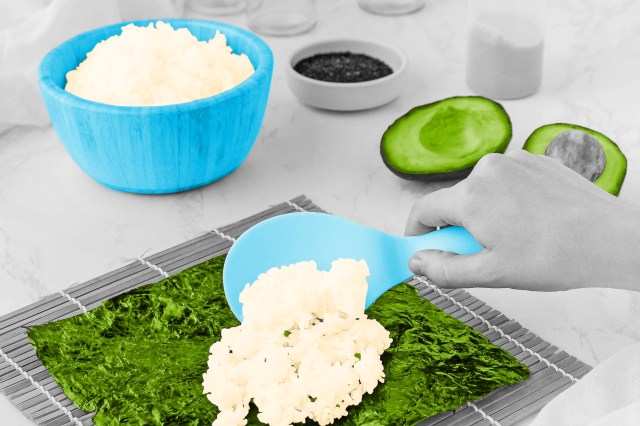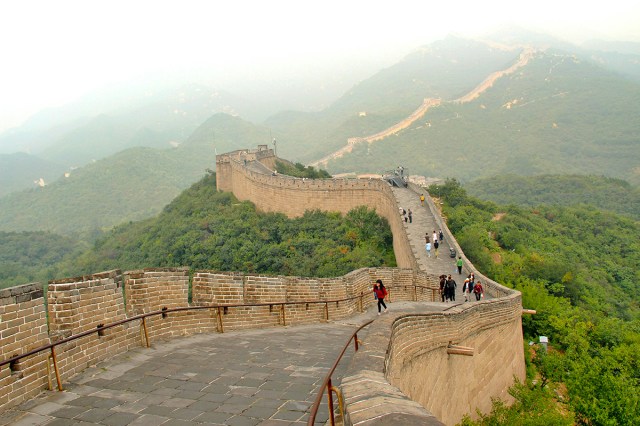
It Helps Hold the Great Wall of China Together
A 2020 study conducted by researchers at China’s Zhejiang University determined that sticky rice was once used in the construction of various Chinese structures, including the Great Wall of China. The study determined this unique mortar was likely developed around 1,500 years ago, combining sticky rice soup with more traditional elements such as lime and water.
The research team wrote that sticky rice has “more stable physical properties” than the standard mortars that preceded it, thus providing additional strength and durability. For example, sticky rice is less permeable to water than lime, so the former could offer more structural integrity amid changing weather conditions.
Not only was this sticky-rice mortar used for portions of the Great Wall, but researchers also noted that given its impeccable performance, it was incorporated into “important buildings such as tombs, city walls, and water resource facilities.” Since the study’s publication, conservation teams have used special sticky rice mortars to restore various centuries-old structures, including the 800-year-old Shouchang Bridge in Huzhou, China.
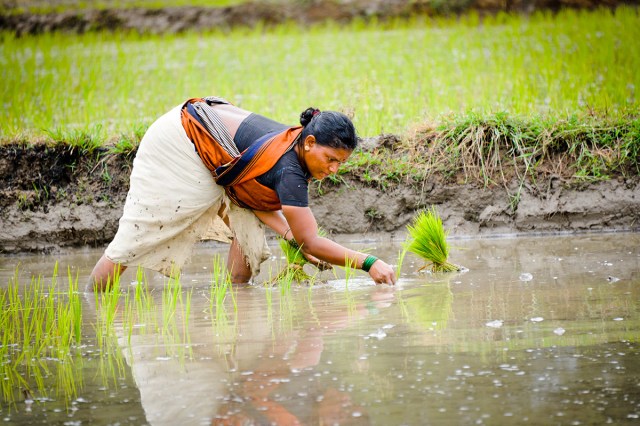
84% of Rice Is Produced in Just 10 Countries
Roughly 84% of the world’s rice is produced in just 10 countries. India tops the list, surpassing China, which previously held the top spot, according to United States Department of Agriculture data from 2024 and 2025. Both countries accounted for roughly 27% of the global rice production, with India producing 147 million metric tons compared to China’s 145.28 million.
The other eight countries are also in Asia. They include Bangladesh at 7%, Indonesia at 6%, Vietnam at 5%, Thailand at 4%, and the Philippines, Burma, Pakistan, and Cambodia all at 2%. Brazil ranked 11th by producing 8,200 metric tons of rice — the most of any non-Asian country.
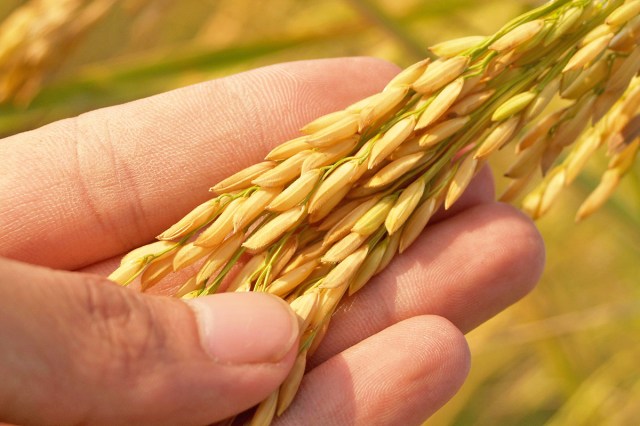
Arkansas Produces the Most Rice of Any U.S. State
According to the USDA, the United States accounts for 1.3% of the global rice trade. Domestically, rice production is dominated by the state of Arkansas, which accounts for an incredible 40% of U.S. rice cultivation. Arkansas’ annual output is more than double that of California, which ranks second among U.S. states, followed by Louisiana, Mississippi, Missouri, and Texas.
Arkansas’ thriving rice industry can be traced back to the late 19th century. It’s thanks, in part, to a man named William Fuller, nicknamed the “father of Arkansas rice.” In 1896, the Arkansas native visited Louisiana on a hunting trip and took an interest in the farmers growing rice in that region.
Fuller took note of how Louisiana’s soil shared similarities with the soil in Arkansas and began experimenting with techniques to grow rice back in his home state. He ultimately succeeded, inspiring other Arkansan farmers to follow suit. By 1905, Arkansas’ rice industry was bustling, and the state became the nation’s leading rice producer by the 1940s.
More Interesting Reads

George H.W. Bush Declared September National Rice Month
On August 20, 1991, President George H.W. Bush signed Proclamation 6323, officially designating September as National Rice Month in the United States. Bush signed the order “to promote greater awareness of the versatility and the value of rice, and to celebrate America’s status as a major exporter,” according to the text of the proclamation.
This decree was just one example of an awareness initiative that sought to boost the popularity of rice in the United States during the 1990s. While it’s hard to say whether National Rice Month had a direct impact, numbers show that per capita rice consumption in the U.S. certainly shot up during the decade.
According to the Cereal & Grains Association, Americans ate 15.75 pounds annually during the mid-1980s — a number that increased to 27.09 pounds by the new millennium. The average American continues to consume roughly 27 pounds of rice on a yearly basis, according to the USA Rice Foundation.
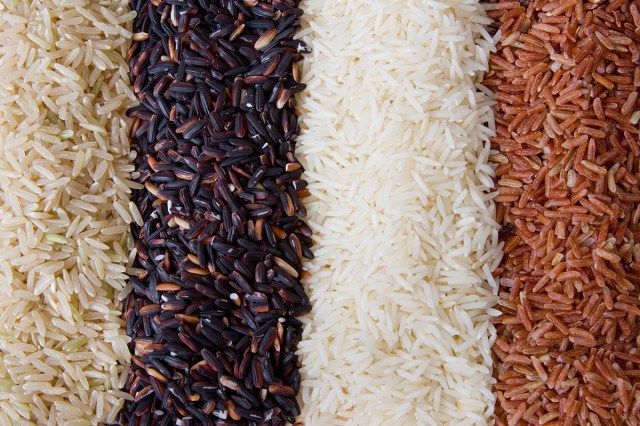
There are More Than 40,000 Varieties of Rice
More than 40,000 varieties of rice are grown worldwide, most of which fall into one of two major groups: indica or japonica. Indica rice tends to be longer, thinner, and less starchy than its japonica counterparts and includes popular varieties such as Indian basmati and Thai jasmine rice. The U.S. Department of Agriculture estimates that certain indica rice varieties account for 62% to 66% of the global rice trade, with basmati and jasmine rice (also members of the indica subspecies, but technically classified as “aromatic” varieties for trade purposes) accounting for an additional 23% to 25%.
Japonica rice, on the other hand, only accounts for 9% to 10% of the global rice trade. These varieties tend to be grown in regions with cooler climates such as Japan, Korea, and parts of the European Union. Japonica rice varieties tend to develop a sticky texture when cooked and are often used as sushi rice or in risotto.
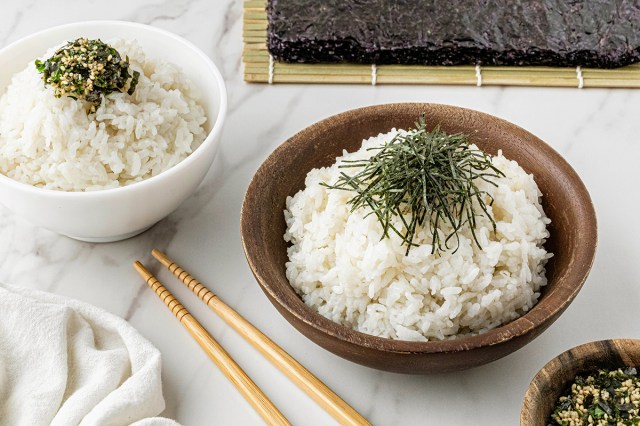
All White Rice Starts Out as Brown
Given the significant visual and nutritional differences between white and brown rice, you may be surprised to learn that all white rice is initially brown. This color change is the result of a milling process that strips rice of its husk, bran, and germ, which are naturally browner in color. In turn, the process leaves behind the rice’s endosperm, which is much whiter.
This milling process is used to increase the grain’s shelf life: In its natural state, brown rice tends to have a shelf life of around six months, given the outer layers spoil more rapidly. White rice, on the other hand, has had those outer layers stripped away and can therefore keep for three decades if stored properly.
But in addition to causing rice to lose its brown color, the milling process also removes many of the fibers and nutrients contained in those outer layers. To account for this nutritional loss, the white rice you see sold in stores has usually been enriched with added nutrients.

